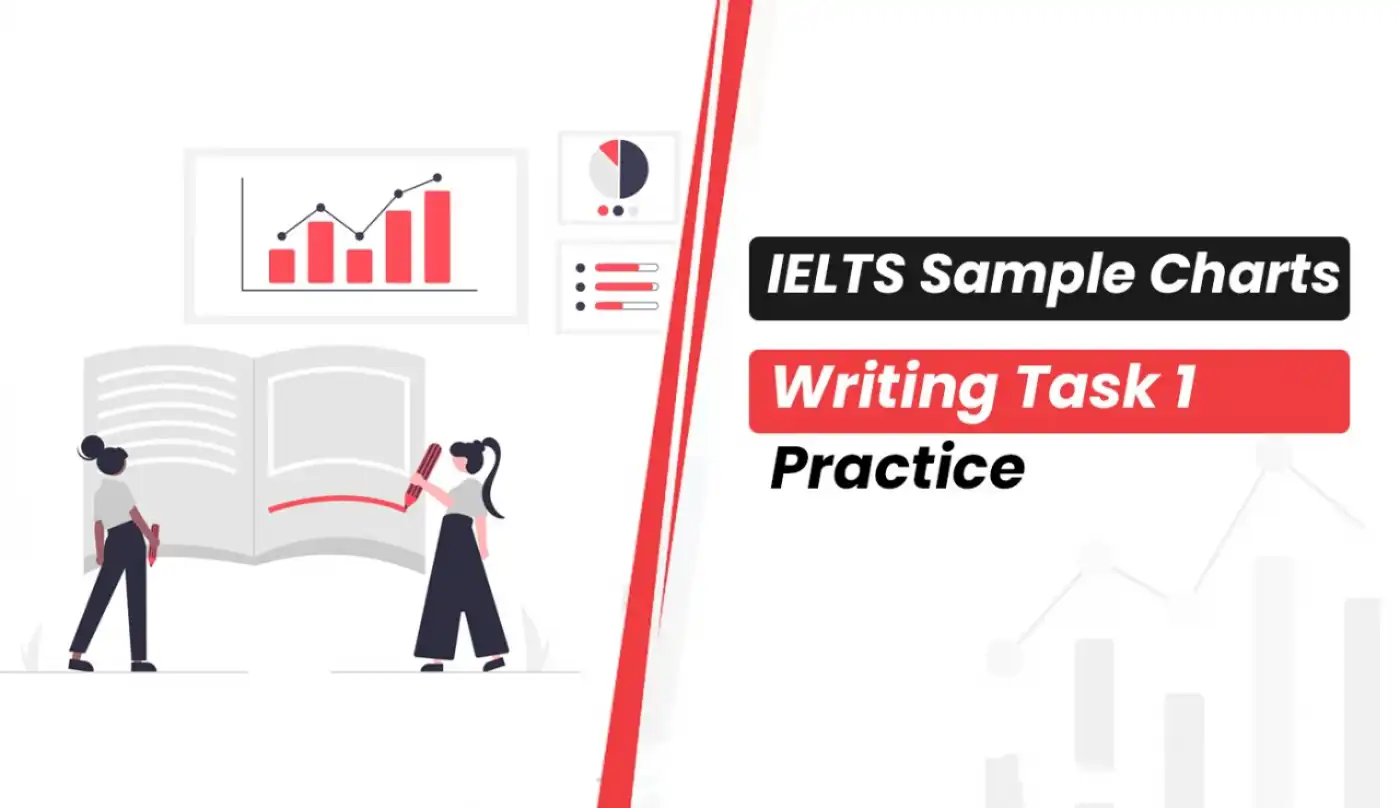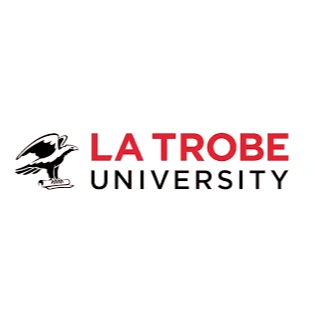• IELTS
IELTS Sample Charts for Writing Task 1 Practice
4452 Reads
3 min Read
IELTS WRITING TASK 1 (Academic Paper) is a report that includes multiple charts such as bar charts, line graphs, tables, pie charts, diagrams, process maps, and combinations of the aforementioned charts. This task has a time limit of 20 minutes and a word limit of 150 words. Students can command all of the different types of charts with practise, but the most difficult aspect of Task 1 is the relevancy factor. Students frequently write out of context answers, which results in a mark deduction.

IELTS WRITING TASK 1 (Academic Paper) is a report that includes multiple charts such as bar charts, line graphs, tables, pie charts, diagrams, process maps, and combinations of the aforementioned charts. This task has a time limit of 20 minutes and a word limit of 150 words. Students can command all of the different types of charts with practise, but the most difficult aspect of Task 1 is the relevancy factor. Students frequently write out of context answers, which results in a mark deduction.
The following blog focuses entirely on the table chart of Task 1 with an illustrated example and key learning points for an effective answer to score high bands in IELTS Task 1.
Tables are not as visually clear as graphs, pie charts, and so on because they present a large number of numbers, making it more difficult to immediately see what patterns exist to make comparisons. Therefore, students must carefully examine the data to determine how it will be organised into logical groups and paragraphs.
Also read : IELTS Exam type
Writing task 1 table sample
You should spend about 20 minutes on this task.
The Table below shows the results of a survey that asked 6800 Scottish adults (aged 16 years and over) whether they had taken part in different cultural activities in the past 12 months.

Solution
The 16-24 age groups had the highest participation in any activity, with 35% and 30%, respectively, doing performance and visual arts. Other activities, particularly those involving computers, were significantly lower, accounting for only 10% of the total.
Moving on to older age groups, the highest participation rate seen for 25-44 year olds was in performance, though this was much lower, at only 22%. The most popular activity for the 45-74 age groups, crafts, had a similar rate of 22%. Again, computer popularity was low among those aged 25 and up, as was interest in writing.
Taking all age groups into account, it is clear that performance and crafts were the most popular; accounting for over 19%, while cultural purchases and visual arts were slightly less popular, accounting for 16% and 15%, respectively. Finally, there was little interest in writing and computing.
Also read : IELTS Exam dates
Key skills for writing task 1 table charts
- There should always be a clear introduction to the graph (paraphrasing rather than copying the rubric) followed by an overview that highlights key changes/trends in the table.
- The Task 1 table chart response is well-organized and thus easy to follow and read, with paragraphs organised around age groups (there are usually various ways to organise your answer, but you must make sure when you make your choice it is logical and will not leave the examiner getting lost or confused as they attempt to read it).
- Comparisons between age groups are made at various points in the IELTS table, which you are specifically asked to do in the rubric.
- Finally, in the writing task 1 table, a good mix of vocabulary and a variety of sentence types and structures should be used to demonstrate flexibility and skill with lexis and grammar.
Also read : IELTS Test Centres
FAQ
Get great articles direct to your inbox
The latest news, articles, and resources, sent straight to your inbox every month.
Popular Universities to Study Abroad
World class education waiting for you.


La Trobe University - Bendigo Campus
Victoria, Australia • 52 Programmes
Tuition Fee : AUD 33000-76000 / year

Mount Saint Vincent University
Nova Scotia, Canada • 50 Programmes
Tuition Fee : CAD 15500-20000 / year


TCS - The Chicago School of Professional Psychology - Anaheim Campus
California, USA • 4 Programmes
Tuition Fee : USD 0-0 / year

Management Development Institute of Singapore (MDIS)
Central Region, Singapore • 39 Programmes
Tuition Fee : SGD 0-0 / year


London Metropolitan University - Aldgate Campus
England, UK • 53 Programmes
Tuition Fee : GBP 13000-17500 / year
Popular English Language Proficiency Exams
IELTS Online
- Live Classes
Blogs and Articles
Curated content to keep you updated on the latest education trends, news and more.
A Guide to calculating CGPA to percentage to study abroad
Updated on • Apr 25,2025 05:36 PM IST • Study Abroad
SAT Exam 2025: Dates, Registration, Eligibility, and Preparation Tips
Updated on • Apr 25,2025 10:39 AM IST • Education
Ireland Student Visa Process 2025 | Step-by-Step Guide & Requirements
Updated on • Apr 19,2025 03:30 PM IST • Ireland
ACT vs. SAT: Which One to Choose?
Updated on • Apr 14,2025 01:46 PM IST • Study Abroad
Updated on • Apr 11,2025 05:53 PM IST • IELTS
Backlog Certificate: A Complete Guide
Updated on • Apr 11,2025 01:47 PM IST • Study Abroad Guidance
PTE Score Chart 2025: PTE Exam Scoring System & Calculation
Updated on • Apr 09,2025 05:37 PM IST • PTE
Master's in Computer Science in the USA
Updated on • Apr 08,2025 05:59 PM IST • USA
Top Trending MBA Specialisations in 2025
Updated on • Apr 08,2025 04:47 PM IST • Study Abroad
Describe Your Hometown IELTS Speaking Part 1 Topic
Updated on • Apr 07,2025 05:50 PM IST • IELTS
How to Get a Job in USA in 2025
Updated on • Apr 07,2025 03:19 PM IST • USA
Highest Paying Jobs in the World
Updated on • Apr 01,2025 05:31 PM IST • Study Abroad
Student Life in Ireland in 2025
Updated on • Mar 29,2025 05:50 PM IST • Ireland
Top Public Universities in Germany
Updated on • Mar 26,2025 04:33 PM IST • Germany
Top Universities for Masters in Ireland in 2025
Updated on • Mar 25,2025 04:36 PM IST • Ireland
Cost of Living in Singapore for Indian Students in 2025
Updated on • Mar 22,2025 11:57 AM IST • Singapore
PTE vs IELTS : Know the Difference and Which is Easier?
Updated on • Mar 21,2025 03:38 PM IST • IELTS
Updated on • Mar 20,2025 10:19 AM IST • Germany
Updated on • Mar 12,2025 11:20 AM IST • Ireland
Updated on • Mar 11,2025 01:18 PM IST • USA
Related Blogs and Articles
A little effort to provide an authentic and reliable content for keen readers!!
Updated on • 11-04-2025 • IELTS
Describe Your Hometown IELTS Speaking Part 1 Topic
Updated on • 07-04-2025 • IELTS
PTE vs IELTS : Know the Difference and Which is Easier?
Updated on • 21-03-2025 • IELTS
IELTS Exam Dates 2025 in India
Updated on • 18-01-2025 • IELTS
IELTS Reading Practice Tests 2025: Reading Passage and Sample Questions
Updated on • 15-01-2025 • IELTS
IELTS Letter Writing Topics 2025
Updated on • 15-01-2025 • IELTS
Canada IELTS band requirements 2025
Updated on • 10-01-2025 • IELTS
Updated on • 25-11-2024 • IELTS
Updated on • 21-11-2024 • IELTS
Updated on • 02-11-2024 • IELTS
Linking Words for IELTS Speaking - Word List & Tips
Updated on • 25-10-2024 • IELTS
IELTS Writing Task 2 - Academic and General Topics with Sample Answer
Updated on • 25-10-2024 • IELTS
IELTS Writing Task 2: Tips, Lessons & Models
Updated on • 25-10-2024 • IELTS
IELTS Test Report Form (TRF): Number, Tracking, Validity and Sample
Updated on • 25-10-2024 • IELTS
IELTS Speaking Samples and Answers
Updated on • 25-10-2024 • IELTS
Updated on • 25-10-2024 • IELTS
Updated on • 25-10-2024 • IELTS
IELTS GT Writing Task 1/ IELTS Letter Writing
Updated on • 25-10-2024 • IELTS
Updated on • 25-10-2024 • IELTS
How many times is the IELTS exam conducted in a year?
Updated on • 25-10-2024 • IELTS















